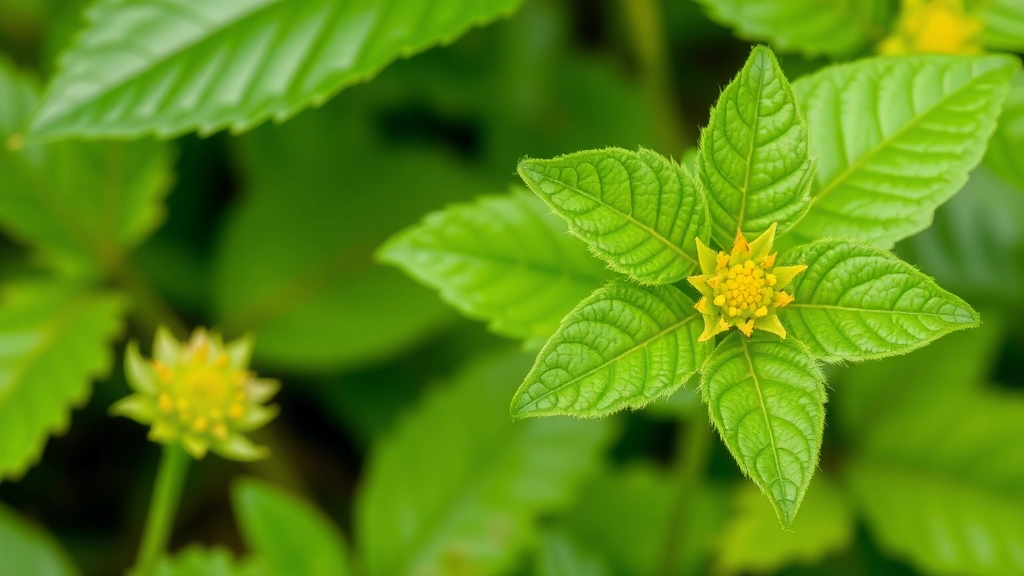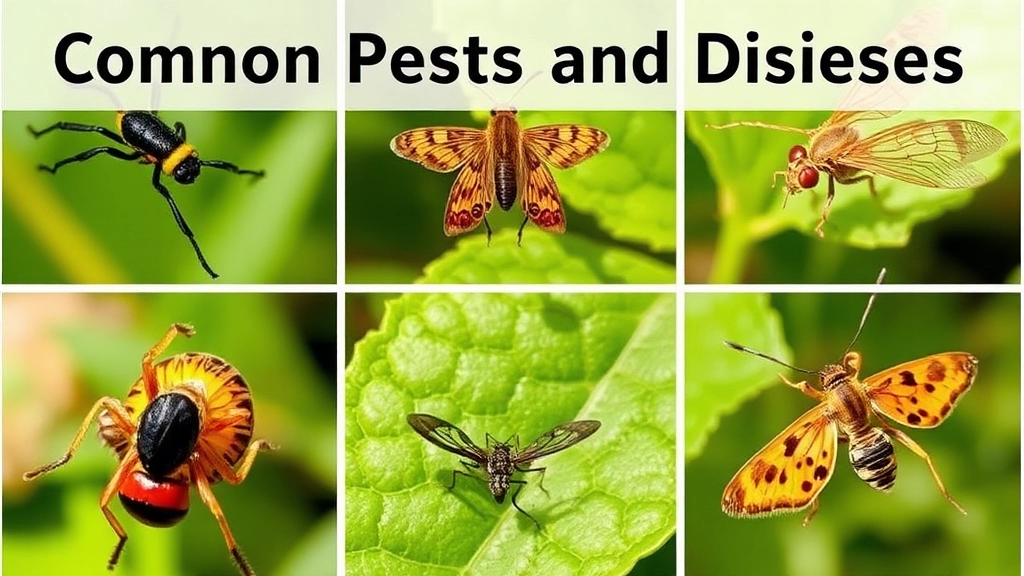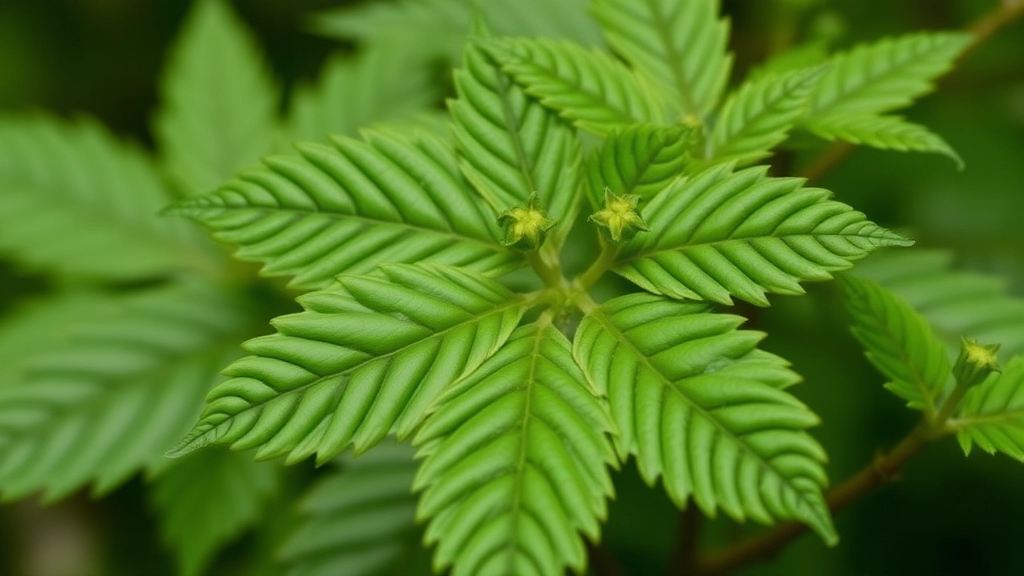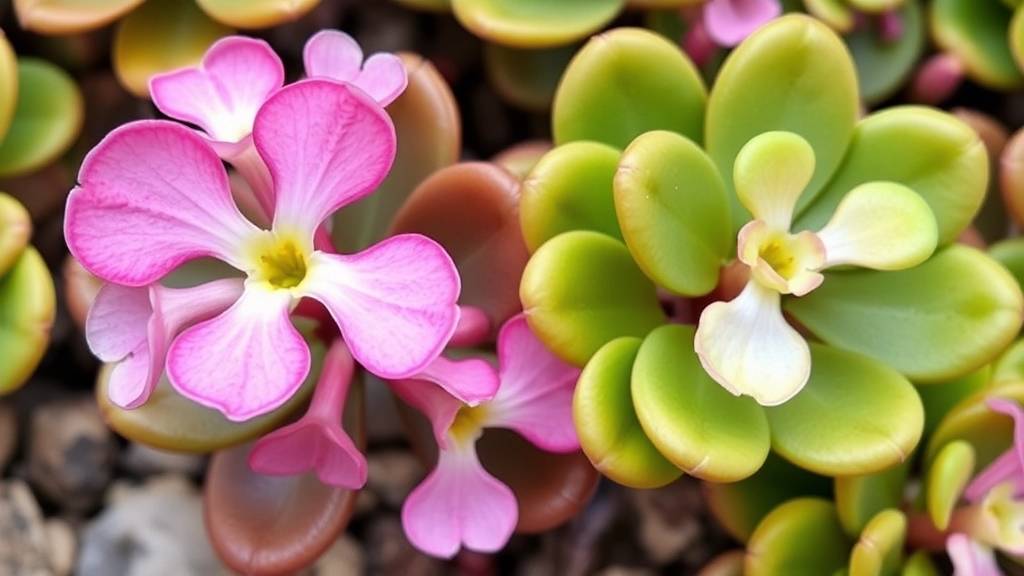Welcome to the fascinating world of Kalanchoe pubescens!
As a plant enthusiast, I’m thrilled to share my insights on this unique succulent. Known for its velvety leaves and resilient nature, this hidden gem from Madagascar has captured the hearts of plant lovers worldwide. Join me as we explore its captivating characteristics, care requirements, and potential benefits.
Article Overview
In this article, we’ll delve into the Kalanchoe pubescens’ natural habitat, growth patterns, and propagation methods. We’ll also discuss its uses in horticulture, potential medicinal properties, and how to care for it throughout the seasons. Whether you’re a seasoned gardener or a curious beginner, you’ll find valuable insights to help your Kalanchoe pubescens thrive.
Overview of Kalanchoe Pubescens
Let’s dive into the world of Kalanchoe pubescens, shall we?
This succulent’s a bit of a hidden gem in the plant world.
You might know it as the Felt Bush or Felt Plant.
Why? Well, it’s got these fuzzy leaves that feel like velvet.
It’s part of the Crassulaceae family, which is fancy talk for “stonecrop” plants.
Now, I’m not gonna bore you with a bunch of scientific mumbo-jumbo.
Here’s the deal: Kalanchoe pubescens is a tough little plant.
It’s drought-resistant and can handle some neglect.
Perfect for those of us who sometimes forget to water our green buddies, right?
This plant’s got a cool trick up its sleeve too.
It can propagate from leaf cuttings. Talk about resilient!
Originally from Madagascar, it’s now a popular houseplant worldwide.
Why? Because it’s easy to care for and looks pretty darn good.
It’s got these clusters of small, star-shaped flowers that’ll brighten up any room.
But here’s the kicker: it’s not just a pretty face.
Some folks use it in traditional medicine. Interesting, huh?
So, whether you’re a plant newbie or a seasoned green thumb, Kalanchoe pubescens might be worth a shot.
It’s a low-maintenance plant that packs a visual punch.
And who knows? It might just become your new favourite succulent.
Botanical Characteristics

Alright, let’s dive into the botanical characteristics of Kalanchoe pubescens. This succulent’s got some pretty cool features that make it stand out from the crowd.
Physical Appearance
First off, Kalanchoe pubescens is a looker. It’s got these thick, fleshy leaves that are its claim to fame. They’re not just any leaves, though – they’re covered in fine hairs, giving the plant a soft, fuzzy texture. It’s like nature’s version of velvet!
The leaves are typically oval-shaped and can grow up to 4 inches long. They’re arranged in opposite pairs along the stem, creating a symmetrical look that’s pretty pleasing to the eye.
Colour and Variegation
Now, here’s where it gets interesting. The leaves of Kalanchoe pubescens aren’t just green. They’ve got this cool bluish-green tint that can sometimes take on a purplish hue, especially when the plant’s stressed or getting lots of sun. Some varieties even show off reddish edges, adding a pop of colour to the mix.
Flowering Habits
But wait, there’s more! Kalanchoe pubescens isn’t just about the leaves. When it’s happy, it’ll reward you with clusters of small, star-shaped flowers. These blooms are usually yellow or orange, creating a nice contrast against the bluish-green leaves. If you’re interested in other flowering Kalanchoe species, you might want to check out the Kalanchoe blossfeldiana, which is known for its vibrant blooms.
Growth Pattern
As for how it grows, Kalanchoe pubescens is what we call a “subshrub”. It’s not quite a full-on shrub, but it’s more than just a little plant. It can reach heights of up to 2 feet, spreading out to form a bushy clump over time.
Root System
Underground, Kalanchoe pubescens has a shallow root system typical of succulents. This adaptation helps it survive in its native arid environments, allowing it to quickly absorb water when it’s available. Speaking of adaptations, the Kalanchoe pinnata, also known as an air plant, has some fascinating survival strategies of its own.
So there you have it – the botanical lowdown on Kalanchoe pubescens. It’s a fuzzy, colourful, flower-producing machine that’s built to survive tough conditions. Pretty cool, right?
Natural Habitat and Distribution
Ever wondered where Kalanchoe pubescens calls home? Let’s dive in.
This succulent’s a native of Madagascar. Yeah, that island off Africa’s east coast.
It’s not just any part of Madagascar though. These plants love the rocky, dry areas.
Think southern and western parts of the island. That’s their sweet spot.
Why there? Well, it’s all about adaptation.
These areas get little rainfall. Perfect for a water-storing succulent.
But here’s the kicker – they’re not just stuck on Madagascar anymore.
Thanks to plant lovers (like us), they’ve spread globally.
You’ll find them in warm climates worldwide now.
Places like Southern Europe, parts of the US, and even Australia.
But remember, they’re not fans of frost. At all.
So in colder spots, they’re mostly indoor plants.
The wild ones? They’re getting rarer in their native habitat.
Habitat loss is a real issue. Makes our garden-grown ones even more special.
Want to give them a home? Just make sure you’ve got a sunny, warm spot.
Mimic those Madagascar conditions, and they’ll thrive.
Growth and Care Requirements
Let’s dive into how to keep your Kalanchoe pubescens thriving, shall we? I’ve learned a thing or two about these beauties over the years, and I’m excited to share the secrets that’ll make your plant the envy of the neighbourhood.
Light: The Sun’s Sweet Spot
First things first, these succulents are sun-lovers, but they’re not fans of getting scorched. Here’s the deal:
- Aim for bright, indirect light
- A few hours of morning sun? Perfect!
- Afternoon sun? That’s a bit too harsh, mate
I once put mine in full sun thinking “more is better,” and boy, was I wrong. The leaves turned redder than a British tourist on a Spanish beach!
Soil: The Foundation of Success
Now, let’s talk dirt:
- Well-draining soil is key
- Mix regular potting soil with sand or perlite
- Cactus mix works a treat too
Think of it like this: your Kalanchoe wants soil that’s as quick-draining as a British summer is short.
Water: Less is More
Here’s where most people mess up. These plants are like camels â they store water for ages. So:
- Let the soil dry out completely between waterings
- In winter, cut back even more
- Overwatering? That’s a one-way ticket to root rot city
Temperature: Keeping it Cosy
Kalanchoe pubescens isn’t too fussy about temperature, but it does have its limits:
- Ideal range: 15-24°C (59-75°F)
- Can handle brief dips to 10°C (50°F)
- Anything below that? Time to bring it inside, mate
Humidity: No Sweat
Good news! These plants aren’t drama queens about humidity. They’re happy in average room conditions, so no need to fuss with humidifiers or misting.
Fertiliser: A Little Boost
During the growing season (spring and summer):
- Feed every 4-6 weeks with a balanced, water-soluble fertiliser
- Dilute to half-strength â these aren’t hungry hippos
In winter, give it a rest. Your Kalanchoe pubescens is taking a little holiday from growing.
Pruning: Keeping it Tidy
A bit of pruning goes a long way:
- Remove dead or yellowing leaves
- Pinch off leggy growth to encourage bushiness
- After flowering, cut back spent blooms
Remember, pruning isn’t just about looks â it’s like giving your plant a spa day. It’ll come back refreshed and ready to show off.
Repotting: Room to Grow
Every couple of years, your Kalanchoe might need a size up:
- Choose a pot 1-2 inches larger
- Spring is the best time for this
- Fresh soil = happy plant
Think of it as upgrading from a studio flat to a one-bedroom â your plant will appreciate the extra space!
By following these growth and care requirements, your Kalanchoe blossfeldiana will be living its best life. Remember, it’s all about finding that sweet spot between neglect and helicopter plant parenting. Get it right, and you’ll have a stunning succulent Kalanchoe tomentosa that’ll be the talk of your next garden party!
Propagation Methods
Let’s talk about growing more Kalanchoe pubescens, shall we?
It’s easier than you might think.
Here’s the deal: you’ve got a few solid options.
Leaf cuttings? Yep, that works.
Stem cuttings? Absolutely.
Seeds? Sure, if you’re feeling patient.
But here’s my favourite method – leaf propagation.
Why? It’s quick, it’s simple, and it’s kinda fun.
Here’s how you do it:
- Snag a healthy leaf
- Let it dry out for a day or two
- Pop it on some well-draining soil
- Wait for the magic to happen
Seriously, it’s that easy.
You’ll see tiny plantlets sprouting from the leaf edges.
It’s like watching mini Kalanchoes being born.
Now, stem cuttings are another solid choice.
Just slice off a bit of stem, let it callous over, and stick it in soil.
Boom – new plant.
Seeds? They work too, but they’re slow.
And let’s be honest, who’s got the patience for that?
The key with any method? Don’t overwater.
These succulents hate soggy feet.
So, which method are you gonna try first?
Remember, propagating Kalanchoe pubescens is all about keeping it simple and letting nature do its thing.
Common Pests and Diseases

Alright, let’s chat about the nasty critters and annoying issues that can mess with your Kalanchoe pubescens. Trust me, I’ve been there, and it’s not fun. But don’t worry, I’ve got your back.
Pesky Bugs That Love Your Plants
- Mealybugs: These little cotton-ball lookalikes are a real pain. They suck the life out of your plant and leave a sticky mess behind.
- Spider mites: Tiny but terrible, these guys can make your plant look like it’s covered in cobwebs.
- Aphids: Small, green, and always hungry, they’ll munch on your plant’s new growth.
Tip: Keep an eye out for any weird spots or changes on your plant. Catching these buggers early is key.
Diseases That Can Ruin Your Day
- Root rot: This is what happens when you love your plant a bit too much with water. The roots get soggy and start to rot.
- Powdery mildew: Looks like someone dusted your plant with flour. It’s not a good look.
- Leaf spot: Brown or black spots on the leaves that can spread if you’re not careful.
Here’s the deal: Most of these issues come from overwatering or poor air circulation. So, ease up on the water and give your plant some space to breathe.
Quick Fix Tips:
- For bugs: Mix up some soapy water and give your plant a good spray down.
- For diseases: Cut off the bad parts and improve your plant’s environment.
Remember, prevention is better than cure. Keep your Kalanchoe blossfeldiana happy with the right care, and you’ll avoid most of these headaches.
So, there you have it – the lowdown on common pests and diseases that might bug your Kalanchoe pubescens. Keep these tips in mind, and you’ll be well-equipped to tackle any issues that come your way. If you’re interested in learning more about different Kalanchoe varieties, check out the Panda Plant (Kalanchoe tomentosa) for another fascinating succulent to add to your collection.
Uses in Horticulture and Landscaping
Kalanchoe pubescens is a total game-changer in the garden scene.
I’ve seen it work wonders in all sorts of setups.
Let’s break it down:
Rock Gardens and Xeriscapes
- This little beauty thrives in dry spots.
- It’s perfect for those tricky areas where other plants struggle.
- I’ve used it to add pops of colour in rocky landscapes.
Container Planting
- Kalanchoe pubescens is a star in pots and hanging baskets.
- It’s low-maintenance and looks fab on patios or balconies.
- I love mixing it with other succulents for a cool, modern vibe.
Ground Cover
- In warmer climates, it can spread like a champ.
- It’s great for filling in gaps between larger plants.
- I’ve seen it create stunning carpets of green and pink.
Indoor Decor
- Don’t forget about bringing it inside!
- It’s a top choice for bright windowsills or office desks.
- I’ve gifted these to mates who can’t keep plants alive – it’s that easy.
Vertical Gardens
- Its compact size makes it perfect for living walls.
- I’ve used it in vertical setups, and it always turns heads.
Remember, Kalanchoe pubescens isn’t just a pretty face.
It’s a versatile player in any garden or landscape design.
Whether you’re a pro or just starting out, this plant’s got your back.
Potential Medicinal Properties

Let’s dive into the juicy stuff about Kalanchoe pubescens and its potential medicinal properties. Now, I’m not a doctor, but I’ve done my homework, and let me tell you, this little plant might be packing some serious health punches.
First off, it’s worth noting that Kalanchoe pubescens, like its cousins in the Kalanchoe family, has caught the eye of researchers for its possible medicinal uses. But here’s the kicker – we’re still in the early stages of understanding what this plant can really do.
Anti-inflammatory potential
One of the most exciting things about Kalanchoe pubescens is its potential anti-inflammatory properties. Think about it – inflammation is at the root of so many health issues. If this plant could help with that, it’d be a game-changer.
Wound healing
Some studies suggest that certain Kalanchoe species might help speed up wound healing. Imagine having a natural remedy right in your garden that could help with cuts and scrapes. Pretty cool, right?
Antioxidant properties
Here’s another potential superpower of Kalanchoe pubescens – antioxidants. These little warriors fight off free radicals in our bodies, potentially helping to prevent cell damage and slow down aging. Who wouldn’t want a bit of that action?
But here’s the thing – we need to keep our feet on the ground. While these potential benefits sound amazing, we’re still in the research phase. It’s not like you can just start munching on Kalanchoe pinnata leaves and expect miracles (please don’t do that, by the way).
Safety first
Before you get too excited, remember:
- Always consult with a healthcare professional before using any plant for medicinal purposes
- More research is needed to fully understand the effects and potential side effects
- Never substitute proven medical treatments with plant-based remedies without professional advice
The bottom line? Kalanchoe pubescens shows promise in the world of natural medicine, but we’re still piecing together the puzzle. It’s exciting stuff, but let’s keep our expectations in check and our eyes on the ongoing research.
So, while we can’t claim Kalanchoe pubescens is a miracle cure-all, it’s definitely a plant to watch in the world of potential medicinal properties. Who knows? Maybe in a few years, we’ll be seeing Kalanchoe-based treatments popping up everywhere. Until then, let’s appreciate this plant for its beauty and potential, and keep our ears to the ground for new discoveries about Kalanchoe blossfeldiana and its medicinal properties.
Seasonal Care Tips for Kalanchoe Pubescens
Hey there, plant pals! Let’s chat about keeping your Kalanchoe pubescens happy all year round.
Spring: Wakey-Wakey!
- Time to ramp up watering as your plant wakes up
- Give it a nutrient boost with a balanced fertiliser
- Perfect time for repotting if needed
Summer: Soak Up the Sun (But Not Too Much!)
- Water more frequently, but don’t drown it
- Move to a spot with bright, indirect light
- Watch out for sunburn on those fuzzy leaves
Autumn: Prep for Snooze Time
- Gradually reduce watering
- Stop fertilising to let it wind down
- Bring indoor plants away from cold windows
Winter: Chill Out
- Water sparingly – only when soil’s bone dry
- No fertiliser needed – it’s nap time
- Keep away from radiators and drafts
Pro Tip: Kalanchoe pubescens is pretty chill, but it hates wet feet. Always err on the side of underwatering.
Got any Kalanchoe care hacks? Drop ’em in the comments!
Remember, these are just guidelines. Your plant might have its own quirks. Pay attention and you’ll nail it!
Frequently Asked Questions (FAQs)
Alright, let’s dive into some of the burning questions folks often ask about Kalanchoe pubescens. I’ve been growing these beauties for years, and trust me, I’ve heard it all. So, let’s cut through the noise and get to the good stuff.
Is Kalanchoe pubescens toxic to pets?
Short answer: Yep, it can be. Like many succulents, this plant’s got some compounds that might upset your furry friend’s tummy. Keep it out of reach if you’ve got curious cats or dogs.
How often should I water my Kalanchoe pubescens?
Here’s the deal: These guys are succulents, so they’re pretty chill about water. I usually go by the “stick your finger in the soil” method. If it’s dry about an inch down, give it a drink. In summer, that might be once a week. Winter? Maybe every two or three weeks.
Can Kalanchoe pubescens survive outdoors?
Depends where you live, mate. If you’re in a warm spot (think USDA zones 9-11), they’ll be happy as Larry outside. Anywhere colder, and you’ll want to bring them in when the temperature drops below 50°F (10°C).
Why are my Kalanchoe pubescens leaves turning yellow?
Ah, the classic yellow leaf conundrum. Could be a few things:
- Overwatering (most common)
- Not enough light
- Nutrient deficiency
My top tip? Check your watering habits first. These plants hate wet feet.
How big does Kalanchoe pubescens get?
In ideal conditions, these beauties can reach about 12-18 inches (30-45 cm) tall. But don’t worry if yours is a bit smaller – they’re pretty adaptable.
Can I propagate Kalanchoe pubescens from leaves?
You bet! It’s dead easy. Just snip off a healthy leaf, let it callous over for a day or two, then pop it on some well-draining soil. Keep it moist but not wet, and you’ll have a new plant in no time.
Does Kalanchoe pubescens flower?
Yep, and they’re pretty cool when they do. You’ll see clusters of small, star-shaped flowers, usually in shades of pink or red. But don’t expect a constant show – they’re not year-round bloomers.
How much light does Kalanchoe pubescens need?
These guys love their sunshine, but they’re not desert dwellers. Bright, indirect light is the sweet spot. If you’re keeping them indoors, a south-facing window with a sheer curtain is perfect.
Is Kalanchoe pubescens hard to care for?
Nah, they’re pretty low-maintenance. As long as you don’t overwater and give them enough light, they’ll do just fine. Perfect for beginners or busy plant parents.
Can I grow Kalanchoe pubescens in a terrarium?
You could, but I wouldn’t recommend it. These plants like good air circulation and can get a bit leggy in high humidity. They’re better off in a regular pot with drainage holes.
Remember, growing Kalanchoe pubescens is all about finding that sweet spot between neglect and helicopter parenting. Give them what they need, but don’t fuss too much. They’re tough little plants that can handle a bit of tough love.
Frequently Asked Questions (FAQs)
What makes Kalanchoe pubescens unique among succulents?
Kalanchoe pubescens stands out due to its fuzzy, velvety leaves that give it a soft texture. This characteristic, along with its drought resistance and ability to propagate from leaf cuttings, makes it a unique and appealing succulent for plant enthusiasts.
How do I create the ideal soil mix for Kalanchoe pubescens?
The ideal soil mix for Kalanchoe pubescens should be well-draining. Combine regular potting soil with sand or perlite to achieve this. Alternatively, a commercial cactus mix works well too. The key is to ensure the soil doesn’t retain too much moisture.
Can Kalanchoe pubescens survive in low light conditions?
While Kalanchoe pubescens prefers bright, indirect light, it can tolerate lower light conditions better than many other succulents. However, in low light, it may become leggy and lose its compact shape. If you notice this happening, gradually move it to a brighter spot.
How do I encourage my Kalanchoe pubescens to flower?
To encourage flowering, ensure your plant gets enough light and follows its natural growth cycle. Reduce watering and stop fertilizing in late fall and winter. This period of rest can trigger flowering in the following growing season. Also, make sure it’s not in a location with artificial light at night, as this can interfere with its blooming cycle.
Is Kalanchoe pubescens suitable for office environments?
Yes, Kalanchoe pubescens can thrive in office environments. Its low maintenance requirements and tolerance for indoor conditions make it an excellent choice for offices. Place it near a window for optimal light, and remember to water sparingly. Its attractive appearance can add a touch of nature to any workspace.
References
-
Kalanchoe Plant Care & Growing Guide The Spruce – Kalanchoe Plant Care & Growing Guide

